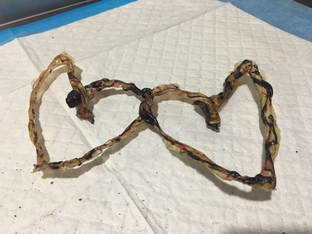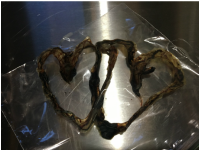...but someone at the hospital or at your clinic told you that they won't release it to you or your encapsulator. This is common and easy to fix!

Five things to remember for the day of your birth:
1. Make sure your birth team knows your are saving your placenta. This is especially important for surgical births. Please have someone double-bag your placenta and place it into your cooler SURROUNDED by ice within 1-2 hours of your baby’s birth. Please refresh the ice every few hours until pickup.
2. There is no such thing as a “2 hour policy” for pickup, so if anyone says that to you, just nod and tell them it’s getting picked up in that time frame. You can tuck the cooler in the corner behind some other belongings until pickup. If an insistent staff person tells you your cooler must leave your birthing room before you are moved to postpartum, you can have someone put the placenta in your car (briefly - especially if the outside temperature is above 30 degrees) and then bring the cooler into your postpartum room once you have moved. Remember that your placenta belongs to you and you do not have to disclose why you are keeping it. You have a right to keep it and you can insist that it is released to you.
3. Sometimes a staff person will tell clients that they can’t encapsulate if there is meconium (the baby’s first poop) at the birth. This is not true. The only contraindications for encapsulation are a diagnosis of a uterine infection (chorioamnionitis) or COVID. Remember that your placenta belongs to you and you don’t have to tell staff why you are keeping it. With an insistent staff person, you can simply say you want it for personal (or religious) reasons and they should release it to you.
4. If there is any reason to send the placenta to pathology, you can insist that they send a portion to pathology and release the rest to you. If they are sending a portion of your placenta to pathology, make sure to tell them not to put any chemicals (such as formaldehyde) on the rest of the placenta so it can still be encapsulated.
5. I have a Placenta Encapsulation Playlist on my YouTube channel. You will find videos about dosage & storage, placenta tinctures, postpartum herbal bath, processing methods, and COVID safety:
https://youtube.com/playlist?list=PLuHvK2mAD7xHv930WzimIuVjYi3KkvGGY
If you have questions about encapsulation, please email me!
1. Make sure your birth team knows your are saving your placenta. This is especially important for surgical births. Please have someone double-bag your placenta and place it into your cooler SURROUNDED by ice within 1-2 hours of your baby’s birth. Please refresh the ice every few hours until pickup.
2. There is no such thing as a “2 hour policy” for pickup, so if anyone says that to you, just nod and tell them it’s getting picked up in that time frame. You can tuck the cooler in the corner behind some other belongings until pickup. If an insistent staff person tells you your cooler must leave your birthing room before you are moved to postpartum, you can have someone put the placenta in your car (briefly - especially if the outside temperature is above 30 degrees) and then bring the cooler into your postpartum room once you have moved. Remember that your placenta belongs to you and you do not have to disclose why you are keeping it. You have a right to keep it and you can insist that it is released to you.
3. Sometimes a staff person will tell clients that they can’t encapsulate if there is meconium (the baby’s first poop) at the birth. This is not true. The only contraindications for encapsulation are a diagnosis of a uterine infection (chorioamnionitis) or COVID. Remember that your placenta belongs to you and you don’t have to tell staff why you are keeping it. With an insistent staff person, you can simply say you want it for personal (or religious) reasons and they should release it to you.
4. If there is any reason to send the placenta to pathology, you can insist that they send a portion to pathology and release the rest to you. If they are sending a portion of your placenta to pathology, make sure to tell them not to put any chemicals (such as formaldehyde) on the rest of the placenta so it can still be encapsulated.
5. I have a Placenta Encapsulation Playlist on my YouTube channel. You will find videos about dosage & storage, placenta tinctures, postpartum herbal bath, processing methods, and COVID safety:
https://youtube.com/playlist?list=PLuHvK2mAD7xHv930WzimIuVjYi3KkvGGY
If you have questions about encapsulation, please email me!



 RSS Feed
RSS Feed
